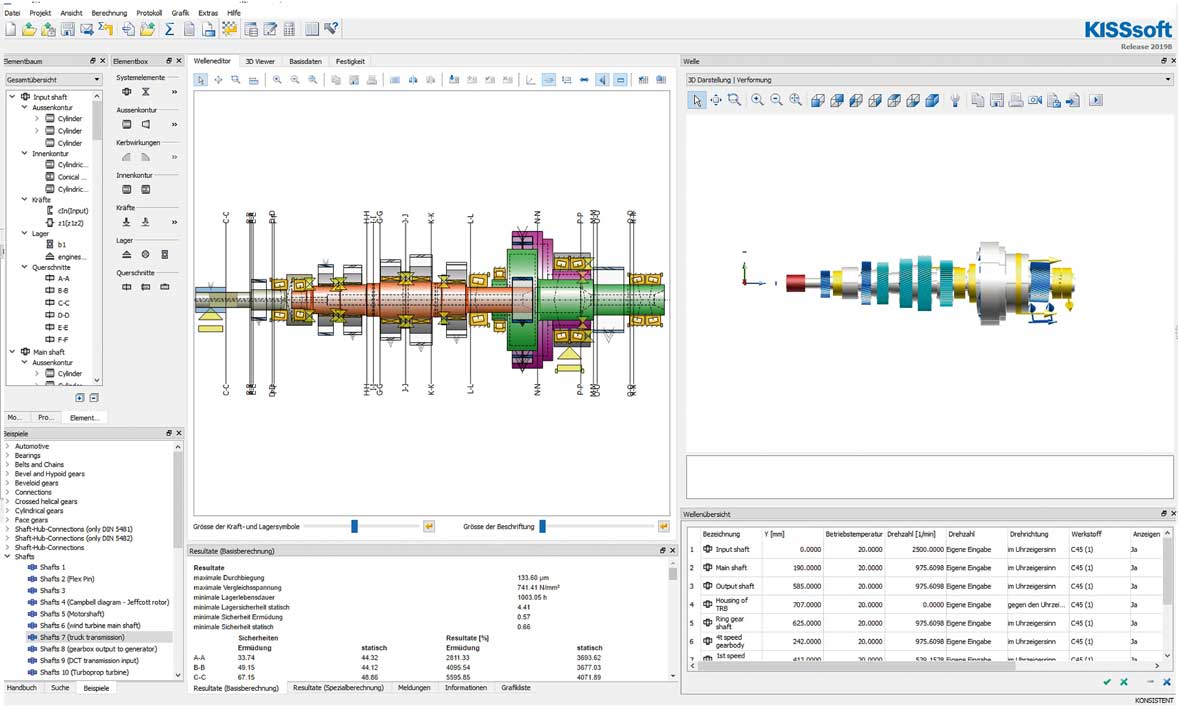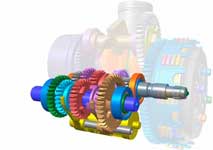As part of their cooperation SKF and KISSsoft a new interface to the Bearing calculation created which the Gear construction Simplified: This enables the engineers to find the ones that are suitable for the machine design Warehouse based on cutting-edge storage technologies.

This means that the KIsssoft users can now two calculation approaches follow the usual ISO calculation and now the extended SKF service life calculation using the latest bearing data.
 Solidworks 2022 | CAD software by and for users
Solidworks 2022 | CAD software by and for users
When using the program, the development engineer designs a as usual Transmission in Kisssoft. It is connected to the SKF Cloud. He uses it to call up the calculation of the bearing service life. The result of the warehouse calculation is based on extremely fast, cloud-based calculation functions. These take into account the operating conditions of the entire bearing system when calculating the service life of individual bearings. This means that the planned transmission design is checked live. This increases the realism and efficiency of the entire process because the user can select the right warehouse from the start.
Very simple bearing calculation
 The warehouse calculation is very easy for the user. He created a complete Gear model in Kisssoft. With the SKF bearing module, its calculation function is automatically called when the bearing life is calculated using the "Extended bearing life according to ISO 281" method. This can be selected in the Kisssoft basic warehouse data window. This method is recommended if you want to consider the effects of lubrication and contamination.
The warehouse calculation is very easy for the user. He created a complete Gear model in Kisssoft. With the SKF bearing module, its calculation function is automatically called when the bearing life is calculated using the "Extended bearing life according to ISO 281" method. This can be selected in the Kisssoft basic warehouse data window. This method is recommended if you want to consider the effects of lubrication and contamination.
Bearing calculation according to extended service life ISO 281
If the extended service life is not selected, the nominal service life of the bearing is calculated according to ISO 281. This function only includes load and speed. In the case of high-quality and modern warehouses, the calculated nominal life but differ significantly from the actual service life.
The service life in an application does not only depend on the load and bearing size. Influencing factors such as contamination, lubrication, proper assembly and environmental conditions also have an effect. The extended service life calculation according to ISO 281: 2007 uses an extended service life coefficient Aiso as a supplement to the nominal service life.
 Gear calculation for gears with background graphic
Gear calculation for gears with background graphic
For the SKF service life comes the service life factor aSKF the concept of a fatigue limit load Pu to be borne as in the expanded ISO 281. In order to take into account three of the most important operating conditions, the service life factor aSKF, as in the expanded ISO 281, takes into account lubrication conditions, load with reference to the fatigue limit load of the bearing and a coefficient ηc for the degree of Pollution.
Bearing calculation according to SKF service life
The extended service life according to ISO 281 can also be calculated in Kisssoft without activating the SKF bearing module. The use of this ISO method may be required as part of a type certification. However, it is not necessarily the most reliable way of predicting the life of a bearing. The SKF service life is an improved version of the expanded ISO 281. The latest findings in tribology and Materials in rolling bearings are taken into account.

The Difference between the two methods is the calculation of the service life coefficient (aISO | aSKF). This can have a decisive influence on the calculated bearing life.
The latest warehouse data are available via Cloud based services Provided by SKF. The user receives the corresponding results in the form of a clear engineering report provided by the calculation software. Both companies are responding to the desire of many engineers for a single tool that contains countless construction data and design regulations or restrictions, updates them automatically and also documents them consistently in a user-friendly format.